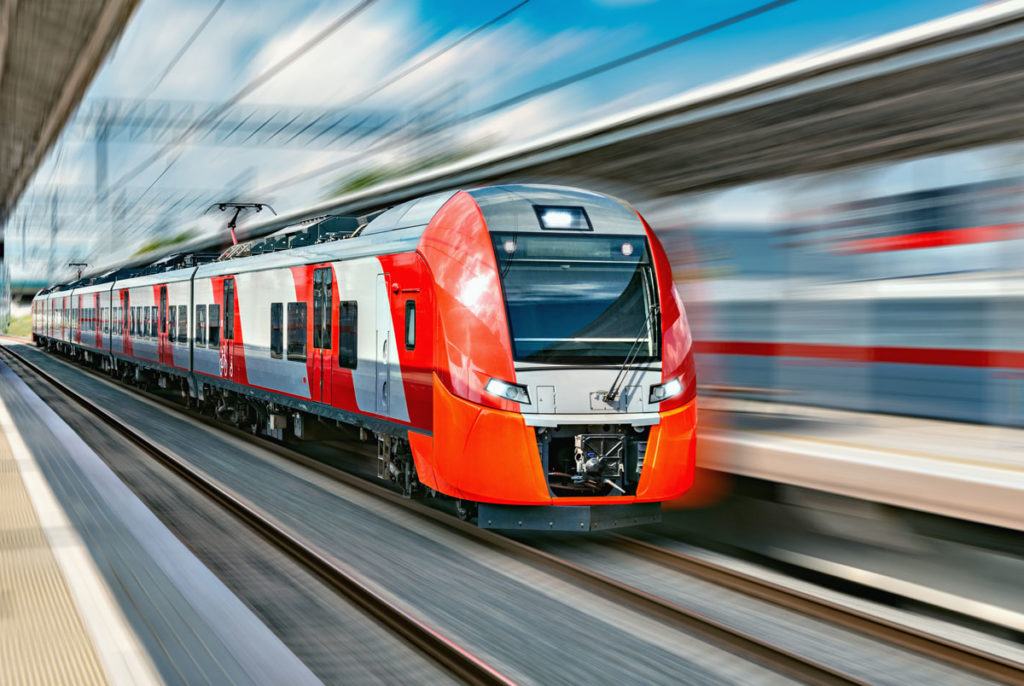How Are Optical Components Used in the Railway Sector?
16th Aug 2019In December 2018, the UK Government published its ‘Rail Sector Deal’ as part of its ‘Industrial Strategy’. The deal aims to improve the use of the UK’s network capacity, enhance the passenger experience and explore new digital rail technologies. Speaking last month, the Rail Industry Association’s Chief Executive, Darren Caplan, referred to the deal as an initiative that can “decarbonise and digitalise our rail network” with a “record of £48bn of funding available” for several large-scale projects1.
Presently, technology plays a crucial part in ensuring safe and cost-effective management and operations across the rail industry, and with such an emphasis on technological innovations within the Government’s deal, this is undoubtedly anticipated to grow in the near future; leaving the optical marketplace in a particularly advantageous position.
Unbeknownst to some, optical components assist with many railway inspection and operational instruments, and our optics are employed for maintenance and observation all over the world. Every country’s rail network varies, and each geographical location has its own innovations for cost-effective travel efficiency.
Here at Knight Optical, we understand that one size does not fit all; that’s why we work alongside rail engineers from all over the globe to bring optically driven technologies to life with custom-made components tailored to specific project needs.
So, how are optical components used within the rail sector and what ground-breaking technologies are set to change the face of the industry? Let’s take a closer look at some pioneering and commonplace examples.
Signalling
Used across the majority of the UK’s rail network, many colour light signals make use of Fresnel lenses to focus beams of light and reduce the potential of incorrect signals from reflected sunlight. Much like a roadside traffic light, the Fresnel lens has the ability to collimate the signal’s light output and create a uniform display, improving visibility for drivers, eradicating the potential of collisions and enhancing the flow of train traffic.
Detection
For potential hazards to be identified, a range of sensor-based detectors are commonly fixed to tracks. These devices can measure several characteristics of passing trains, and all make use of optical components for examination. For example, track-integrated hot bearing detectors (or hot boxes as they are also known) use infrared optics to monitor the radiation of a train’s axle bearings, wheels and disk brakes. If maximum temperature is reached, the detector will mark the train’s journal (bearings) as unsafe for travel.
Another form of optically driven detectors for the rail industry is clearance gauge monitors. These systems comprise infrared or laser-based sensors to examine track structure and clear tunnels. One example commonly found on the railway is laser gauging vehicles (LGVs), which provide real-time observation, measurements and recordings of structure and track positions.
As well as observing track defaults, lasers also play a role in examining the wear and diameters of a train’s wheels. Known as wheel profile systems, this technology is planted in between railway sleepers and measures the profile shape of overhead wheels.
CCTV
As well as preventing crime and anti-social behaviour on the platform, in-carriage CCTV is also installed to keep drivers and guards informed on the happenings within the train in real-time; while, trackside cameras keep transport police informed of perils on the platform. With a high risk of vandalism, many of these surveillance cameras require an elevated level of protection, which is why you’ll find the majority cased in optical domes for added defence.
Sapphire domes are an excellent choice for added CCTV protection. Able to withstand extreme pressures, it is an extremely hard material with transmission over 80% in the 2-5µm wavelength range and is commonly employed for CCTV purposes within the industry.

New Technologies
Various technologies are being implemented and trialled across the global rail sector that aim to improve passenger experience and safety whilst travelling. One example has recently been announced in Sydney, Australia, that is set to enhance passenger flow2. Already being tested at one Australian station, the technology uses the infrared spectrum to create a digital imaging system that consists of 16 infrared and depth cameras to detect movement within the station and inform personnel of congested areas and potential hazards.
Meanwhile, in Pueblo, Colorado, artificial intelligence (AI) is set for trial this month and will see autonomous driving move from our roads to our tracks in a 48-mile autonomous train experiment3. With the evolution of AI and the Internet of Things (IoT), there is even further scope for the employment of optical components for future technology within the rail industry; overcoming challenges such as failure detection and prediction and a new world of rail digitalisation.
Time will tell what innovations will be driving forward the rail sector over the next two decades, but optics will certainly sustain their position as the protagonist in augmenting technological developments.
Custom-Made Optical Components for the Rail Industry
Knight Optical is a world-leading name in optical components, offering a range of precision optics for detection, monitoring and fresh innovations within the rail sector; all of which can be customised by our optical specialists to meet the unique needs of the application and requirements sought.
We provide an assured guarantee that all optical components for rail-related purposes are fully compliant with specification and comply with all regional quality and legislative standards. This guarantee comes courtesy of our ISO 9001:2015 and ISO 14001:2015 UKAS accreditation together with our state-of-the-art in-house Metrology Laboratory and team of dedicated quality assurance experts, all widely respected for their extensive experience and skill.
For tailored advice on optical components for the rail industry from our multilingual team, please call +44 01622 85944 (UK & ROW), +1 401-583-7846 (USA & Canada), or email us at [email protected].
1 https://www.railnews.co.uk/news/2019/07/24-chris-grayling-reaches-the-end.html
2 https://railway-news.com/new-infrared-technology-to-reduce-dwell-times-in-sydney/
3 https://fortune.com/2019/07/29/autonomous-trains-challenges/